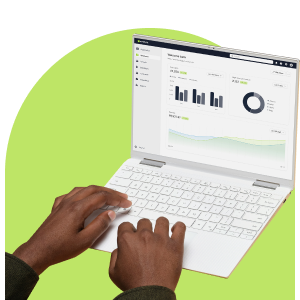Bulk emails with uncluttered design, proportionate image-to-text ratios, and links to external resources with more information stole the show at the You Mailed It Email Marketing Awards 2024. This demonstrates email design goes a long way in determining how successfully your messaging will be received. We understand not all email marketers may have access to designers, which is why we’re sharing top design tips anyone can implement in bulk email campaigns to ensure they are eye-catching and your messaging hits the mark.
Aim for Attractive and Functional Emails
While an aesthetically-pleasing bulk email is important in driving your messaging, the most essential consideration of any campaign is to ensure your design is functional. So, before you spend time curating an attractive email, consider the following practical aspects:
- Use Responsive Design: Build your bulk email using a responsive template to ensure it displays appropriately and proportionately on any device.
- Embrace Light/Dark Mode: Ensure your colours are legible in both modes.
- Ensure User-Friendly Capability: Use at least 14pt regular-weight fonts, high contrast text-backgrounds, and test all hyperlinks.
Do you want more tips and tricks to create engaging mailers? Take our bulk email crash course.
Create an Eye-Catching Header Image
Use a header image with bold, readable text to capture attention. This image could be lifestyle-based or styled with brand colours. The typical size is 600px wide and 350–500px high. Decide whether or not to include your logo, but do use branding elements.
Summarise Your Content with a Sub-Header
Below your header image, include a short two-line sub-header. Use sentence case and align it according to your mailer’s layout. The font size should be smaller than the header.
Design the Body of Your Email
Start your body with a personalised greeting. Then design your mail to tell a visual and text-based story. Segment content using contrasting background colours or blocks.
Example 1: Text-heavy emails can be sectioned with header images and short paragraphs (max 5 lines). Use the inverted pyramid format and strong paragraph starters to align with the F-shaped reading pattern.
Example 2: Use alternating image-text blocks in a zig-zag pattern. Place short descriptions with CTAs in one block and images in the other for balance and engagement.
Other key considerations:
- Embrace White Space: Use padding (24px) and limit text width (150–175px).
- Use a Solid Background: Ensures readability.
- Choose Colour Strategically: Blue builds trust – integrate it with your branding.
- Differentiate CTA Buttons: Use a solid style for primary buttons and outlined for secondary ones.
End with a personal or departmental sign-off to humanise your email.
Learn the difference between personalisation and dynamic content.
End Off Your Email with a Footer
The footer is your digital business card. Include your logo, contact info, social icons, and terms. Make the unsubscribe option visible – a one-click unsubscribe button is best practice.
Make unsubscribing easy and build a strong contact database.
Create Uncluttered Bulk Emails That Drive Results
Cluttered emails overwhelm recipients. Using the tips above, create visually pleasing, easy-to-read mailers that guide the reader from subject line to sign-off, helping your brand resonate clearly and confidently.
Get an Easy-to-Use Bulk Email Platform
Now you know our top email design tips and tricks, it’s time to implement them in your next mailer. Use a builder like Everlytic with drag-and-drop tools and responsive templates to streamline your process.



